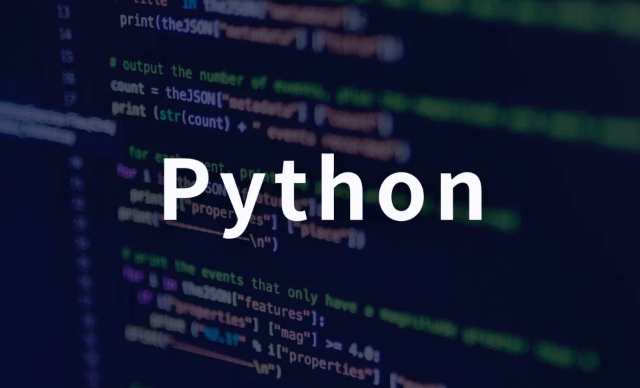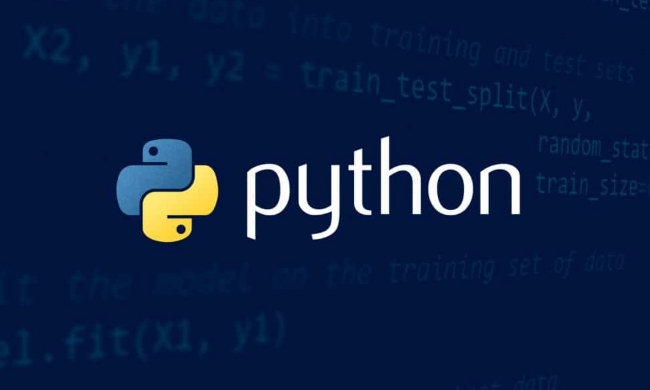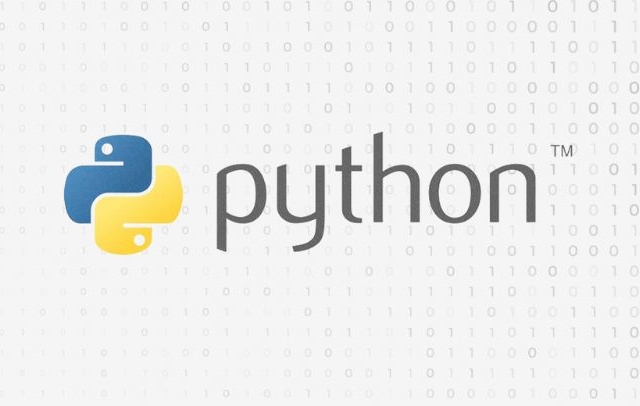The core methods of Python's processing of dates and times include parsing and formatting, calculating time differences and processing time zones. 1. Use datetime.strptime() to parse the string into a datetime object, and use strftime() to convert the string back to the string in format code such as %Y%m%d; 2. Calculate the time difference between the two datetime objects through timedelta, supports accessing attributes such as .days.seconds, and can also add and subtract time units such as timedelta(days=7); 3. The default datetime has no time zone information, and you can use the built-in zoneinfo module in Python 3.9 to add time zones such as .replace(tzinfo=ZoneInfo("America/New_York")). It is recommended to convert cross-region events to UTC time first to avoid daylight saving time problems.

Working with dates and times in Python is pretty straightforward thanks to built-in modules like datetime and time . If you've ever struggled with date formatting, time zones, or calculating durations, Python has tools that make handling these tasks easier than you might think.

Parsing and Formatting Dates
One of the most common tasks is converting between strings and datetime objects. For example, if you get a date from a file or user input like "2024-03-15" , you'll want to parse it into something you can work with.
You can use datetime.strptime() for parsing and strftime() for formatting:

from datetime import datetime
# Parsing a string into a datetime object
date_str = "2024-03-15"
date_obj = datetime.strptime(date_str, "%Y-%m-%d")
# Formatting back to a string
formatted = date_obj.strftime("%B %d, %Y")
print(formatted) # March 15, 2024 The format codes like %Y (year), %m (month), and %d (day) are key here — and they're easy to mix and match depending on your input format.
Some common ones:

-
%H: hour (00–23) -
%M: minute (00–59) -
%S: second (00–59) -
%A: full weekday name -
%a: abbreviated weekday name
Calculating Time Differences
If you need to calculate how much time is between two moments — say, how many days until an event — timedelta is your friend. It represents a duration, not a specific point in time.
Here's how you can calculate the number of days between two dates:
from datetime import datetime start = datetime(2024, 3, 10) end = datetime(2024, 3, 15) diff = end - start print(diff.days) # Output: 5
This subtraction gives you a timedelta object, and you can access .days , .seconds , or even total seconds via .total_seconds() .
It's also useful for adding or subtracting time:
- Add 7 days to a date:
some_date timedelta(days=7) - Subtract 3 hours:
some_datetime - timedelta(hours=3)
Handling Time Zones
By default, Python's datetime doesn't include time zone information — but you can add it using libraries like pytz or Python 3.9 's built-in zoneinfo .
Using zoneinfo (no extra install needed in Python 3.9):
from datetime import datetime
from zoneinfo import ZoneInfo
naive = datetime(2024, 3, 15, 12, 0) # No timezone info
aware = naive.replace(tzinfo=ZoneInfo("America/New_York"))
print(aware)Time zones matter when dealing with events across regions — especially when converting between local and UTC time. UTC is often used as a baseline because it avoids daylight saving issues.
If you're storing timestamps in a database or sending data across systems, always consider normalizing to UTC first.
That's the core of working with dates and times in Python. These tools cover most everyday needs — parsing, formatting, calculating differences, and managing time zones. There are more advanced options like pandas or third-party libraries such as arrow or pendulum , but for many projects, the standard library is enough.
Basically that's it.
The above is the detailed content of How do you work with dates and times in Python?. For more information, please follow other related articles on the PHP Chinese website!

Hot AI Tools

Undress AI Tool
Undress images for free

Undresser.AI Undress
AI-powered app for creating realistic nude photos

AI Clothes Remover
Online AI tool for removing clothes from photos.

Clothoff.io
AI clothes remover

Video Face Swap
Swap faces in any video effortlessly with our completely free AI face swap tool!

Hot Article

Hot Tools

Notepad++7.3.1
Easy-to-use and free code editor

SublimeText3 Chinese version
Chinese version, very easy to use

Zend Studio 13.0.1
Powerful PHP integrated development environment

Dreamweaver CS6
Visual web development tools

SublimeText3 Mac version
God-level code editing software (SublimeText3)
 How to handle API authentication in Python
Jul 13, 2025 am 02:22 AM
How to handle API authentication in Python
Jul 13, 2025 am 02:22 AM
The key to dealing with API authentication is to understand and use the authentication method correctly. 1. APIKey is the simplest authentication method, usually placed in the request header or URL parameters; 2. BasicAuth uses username and password for Base64 encoding transmission, which is suitable for internal systems; 3. OAuth2 needs to obtain the token first through client_id and client_secret, and then bring the BearerToken in the request header; 4. In order to deal with the token expiration, the token management class can be encapsulated and automatically refreshed the token; in short, selecting the appropriate method according to the document and safely storing the key information is the key.
 Explain Python assertions.
Jul 07, 2025 am 12:14 AM
Explain Python assertions.
Jul 07, 2025 am 12:14 AM
Assert is an assertion tool used in Python for debugging, and throws an AssertionError when the condition is not met. Its syntax is assert condition plus optional error information, which is suitable for internal logic verification such as parameter checking, status confirmation, etc., but cannot be used for security or user input checking, and should be used in conjunction with clear prompt information. It is only available for auxiliary debugging in the development stage rather than substituting exception handling.
 How to iterate over two lists at once Python
Jul 09, 2025 am 01:13 AM
How to iterate over two lists at once Python
Jul 09, 2025 am 01:13 AM
A common method to traverse two lists simultaneously in Python is to use the zip() function, which will pair multiple lists in order and be the shortest; if the list length is inconsistent, you can use itertools.zip_longest() to be the longest and fill in the missing values; combined with enumerate(), you can get the index at the same time. 1.zip() is concise and practical, suitable for paired data iteration; 2.zip_longest() can fill in the default value when dealing with inconsistent lengths; 3.enumerate(zip()) can obtain indexes during traversal, meeting the needs of a variety of complex scenarios.
 What are Python type hints?
Jul 07, 2025 am 02:55 AM
What are Python type hints?
Jul 07, 2025 am 02:55 AM
TypehintsinPythonsolvetheproblemofambiguityandpotentialbugsindynamicallytypedcodebyallowingdeveloperstospecifyexpectedtypes.Theyenhancereadability,enableearlybugdetection,andimprovetoolingsupport.Typehintsareaddedusingacolon(:)forvariablesandparamete
 What are python iterators?
Jul 08, 2025 am 02:56 AM
What are python iterators?
Jul 08, 2025 am 02:56 AM
InPython,iteratorsareobjectsthatallowloopingthroughcollectionsbyimplementing__iter__()and__next__().1)Iteratorsworkviatheiteratorprotocol,using__iter__()toreturntheiteratorand__next__()toretrievethenextitemuntilStopIterationisraised.2)Aniterable(like
 Python FastAPI tutorial
Jul 12, 2025 am 02:42 AM
Python FastAPI tutorial
Jul 12, 2025 am 02:42 AM
To create modern and efficient APIs using Python, FastAPI is recommended; it is based on standard Python type prompts and can automatically generate documents, with excellent performance. After installing FastAPI and ASGI server uvicorn, you can write interface code. By defining routes, writing processing functions, and returning data, APIs can be quickly built. FastAPI supports a variety of HTTP methods and provides automatically generated SwaggerUI and ReDoc documentation systems. URL parameters can be captured through path definition, while query parameters can be implemented by setting default values ??for function parameters. The rational use of Pydantic models can help improve development efficiency and accuracy.
 How to test an API with Python
Jul 12, 2025 am 02:47 AM
How to test an API with Python
Jul 12, 2025 am 02:47 AM
To test the API, you need to use Python's Requests library. The steps are to install the library, send requests, verify responses, set timeouts and retry. First, install the library through pipinstallrequests; then use requests.get() or requests.post() and other methods to send GET or POST requests; then check response.status_code and response.json() to ensure that the return result is in compliance with expectations; finally, add timeout parameters to set the timeout time, and combine the retrying library to achieve automatic retry to enhance stability.
 Python variable scope in functions
Jul 12, 2025 am 02:49 AM
Python variable scope in functions
Jul 12, 2025 am 02:49 AM
In Python, variables defined inside a function are local variables and are only valid within the function; externally defined are global variables that can be read anywhere. 1. Local variables are destroyed as the function is executed; 2. The function can access global variables but cannot be modified directly, so the global keyword is required; 3. If you want to modify outer function variables in nested functions, you need to use the nonlocal keyword; 4. Variables with the same name do not affect each other in different scopes; 5. Global must be declared when modifying global variables, otherwise UnboundLocalError error will be raised. Understanding these rules helps avoid bugs and write more reliable functions.






